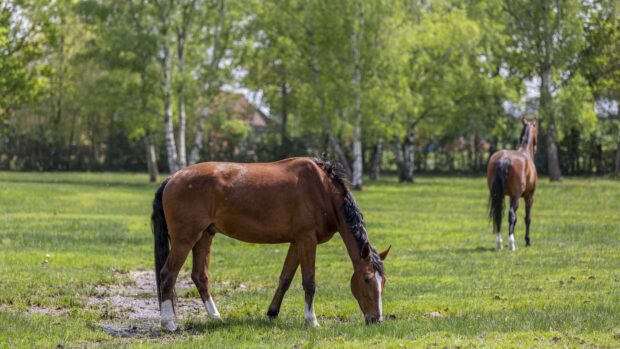A new study shows the importance of ridden work in investigation of performance issues or low-grade lameness – and of understanding what horses are telling us.
Sue Dyson, former head of clinical orthopaedics at the Animal Health Trust, and Danica Pollard studied the use of the ridden horse pain ethogram (RHpE) on horses before and after diagnostic anaesthesia, or nerve-blocking.
The RHpE comprises 24 behaviours including tail-swishing and an open mouth, the presence of eight or more of which may indicate that the horse has musculoskeletal pain, even if it is not overtly lame.
The study, on 150 horses presented for investigation of poor performance, found that most of the horses initially had scores of eight or more of the behaviours, although “lameness in the conventional sense was low-grade or absent”. There was a substantial reduction in the RHpE scores after the nerve-blocking.
“The purpose of this study was to highlight the fact a lot of horses aren’t overtly lame but they’re not performing right,” Dr Dyson told H&H. “And there are ways of determining why they’re not right, and helping them.”
Dr Dyson has said previously that one benefit of the ethogram is identifying issues early, which means they can be treated sooner and so have a better chance of a good outcome.
Of the 150 horses, 35% had no overt lameness but lacked hindlimb impulsion or were short-stepping in front. Only 30% of horses were continuously lame, but the most frequent RHpE score before anaesthesia was nine. This score dropped to two after the nerve-blocks, and this was associated with improved quality of gait and rideability.
“This study highlights the importance of ridden exercise in the investigation of poor performance/low-grade lameness and the value of the RHpE to verify the presence of musculoskeletal pain,” Dr Dyson said.
“Veterinarians must be made more aware of this and must learn how to assess horses ridden, learn how to interpret riders’ complaints, and know how to progress with nerve blocks – or refer to someone who has those skills.”
Dr Dyson added that within the veterinary profession there is a lack of people experienced enough to assess ridden horses in poor-performance investigations, and that nerve-blocking is vital to pinpoint the areas of concern. She said, experienced vets will be able to see from the way a horse is moving what areas to investigate first.
Badly fitting saddles were also an issue. This contributed to poor performance in 37% of the horses despite recent professional saddle-fitting.
“The study didn’t surprise me at all. It’s got lots of messages for riders, owners and trainers,” Dr Dyson said.
“It highlights the importance of riders and trainers recognising that pain-free horses are both more rideable and enable riders to be in a better position and to experience less discomfort.
“The high prevalence of ill-fitting saddles, which adversely affected performance in these horses, emphasises the importance of educating riders and trainers about the importance of correct saddle fit for both the horse and rider for optimal performance.”
World Horse Welfare CEO Roly Owers told H&H this latest study on the RHpE is another “excellent reminder of its usefulness as a tool in helping us listen to what our horses are telling us through their movement and behaviour”.
“Poor performance due to undiagnosed pain and/or an ill-fitting saddle is more common than many of us realise, and this is where the ethogram can really help us to know when to engage our veterinarian or qualified saddle fitter, to ensure our horses are truly comfortable when being ridden,” he said.
You might also be interested in:

‘Pain-free horses don’t react like that’: film aims to help riders hear what their horses are saying

Behaviour assessment tool enables all onlookers to assess pain in horses
Research has found it is possible for untrained observers to assess pain and lameness in ridden horses using an ethogram

Subscribe to Horse & Hound magazine today – and enjoy unlimited website access all year round
Horse & Hound magazine, out every Thursday, is packed with all the latest news and reports, as well as interviews, specials, nostalgia, vet and training advice. Find how you can enjoy the magazine delivered to your door every week, plus options to upgrade your subscription to access our online service that brings you breaking news and reports as well as other benefits.





